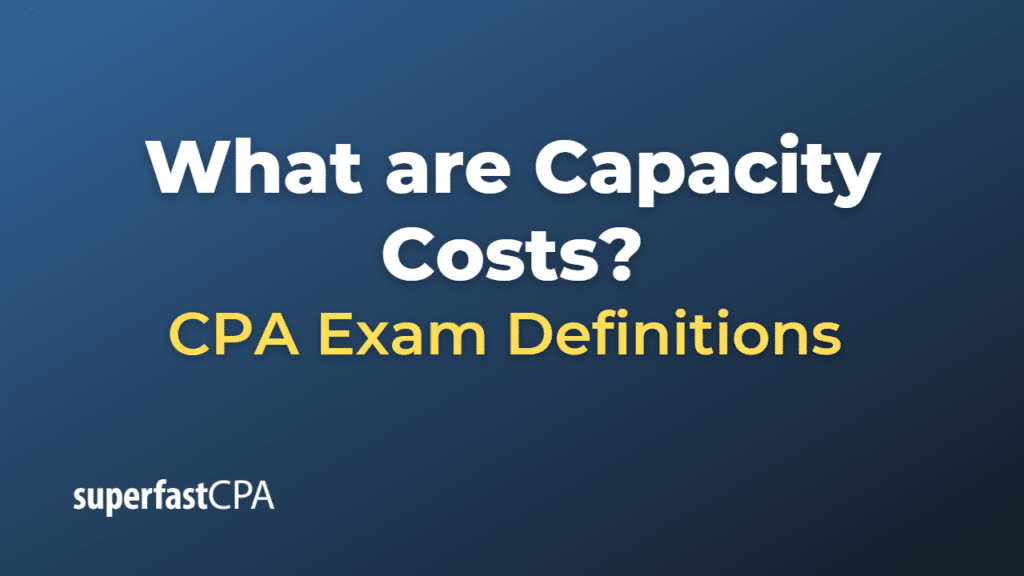Capacity Costs
Capacity costs, also known as fixed costs, are the expenses that a business incurs to maintain its production capacity, regardless of the actual level of output or production. These costs are incurred even when the business is not producing any goods or services, as they are associated with the basic infrastructure, facilities, and resources required to maintain the potential for production.
Capacity costs are typically comprised of expenses such as:
- Rent or mortgage payments for the production facility or office space
- Depreciation and maintenance costs for machinery and equipment
- Salaries and benefits for employees who are not directly involved in production (e.g., management and administrative staff)
- Insurance and property taxes
- Utilities, such as electricity, water, and gas, that are required to maintain the facility
Capacity costs are generally considered to be fixed in the short term, as they do not change with variations in production levels or output. However, over the long term, businesses can make strategic decisions to change their capacity costs by investing in new facilities, equipment, or workforce, depending on the changes in demand and production requirements.
Understanding capacity costs is crucial for businesses when making decisions related to pricing, investment, and production levels. Businesses must cover their capacity costs to remain viable and achieve profitability. If a business cannot generate enough revenue to cover its capacity costs, it may need to adjust its pricing, cut expenses, or reevaluate its business model to ensure long-term sustainability.
Example of Capacity Costs
Let’s consider a hypothetical example of a small manufacturing company, “WidgetCo,” that produces custom widgets. We’ll examine the capacity costs the company incurs to maintain its production capacity, regardless of the actual level of output.
WidgetCo’s capacity costs include:
- Rent: WidgetCo rents a production facility and office space at a monthly cost of $10,000. This expense remains the same regardless of the number of widgets produced.
- Depreciation and maintenance: The company has invested $200,000 in machinery and equipment, which has a useful life of 10 years. The annual depreciation expense is $20,000 ($200,000 / 10 years), and the yearly maintenance cost is $5,000. These expenses are incurred regardless of the number of widgets produced.
- Salaries and benefits: WidgetCo has a management and administrative staff consisting of five employees, with a total annual salary and benefits cost of $300,000. These employees are not directly involved in the production process, so their compensation is considered a capacity cost.
- Insurance and property taxes: The company pays $12,000 per year for insurance coverage and $8,000 per year in property taxes for its production facility.
- Utilities: WidgetCo’s facility requires electricity, water, and gas to maintain operations, resulting in a total annual utility cost of $24,000.
In this example, WidgetCo’s total annual capacity costs add up to $369,000 ($10,000 x 12 months + $20,000 + $5,000 + $300,000 + $12,000 + $8,000 + $24,000). These costs are incurred regardless of the number of widgets the company produces, and WidgetCo must generate enough revenue to cover these costs to achieve profitability and ensure long-term sustainability.
Understanding its capacity costs helps WidgetCo make informed decisions about pricing, production levels, and potential investments in additional capacity, such as new machinery, expanded facilities, or hiring more employees.













